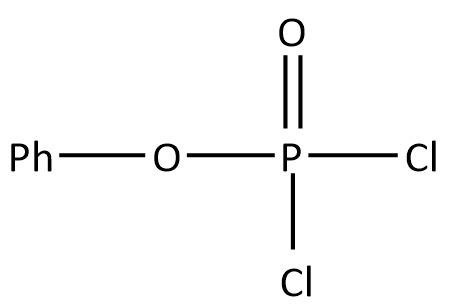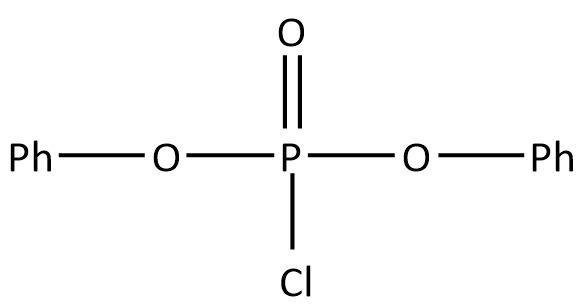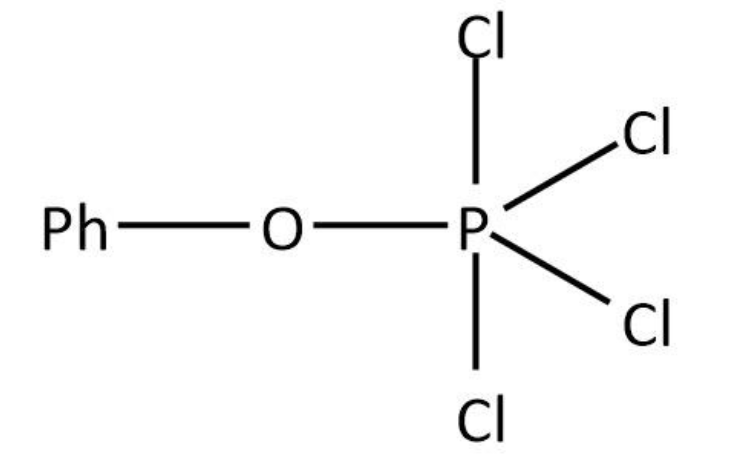
Phenol reacts with $PC{l_5}$ , the main product is:
A.

B.

C.

D. None of these



Answer
567k+ views
Hint: We know that in general, phosphorus pentachloride can be used for preparing alkyl chlorides from alcohol.
Complete step by step answer:
Functional groups impart specific characteristics as it is evident from the name itself. Based on the functional groups, we can have different categories of compounds. Let’s have a look at some of them.
Alkanes are simple hydrocarbons made up of only carbon and hydrogen atoms with a general formula of ${C_n}{H_{2n + 2}}$ where $n$ is an integer.
Alkyl groups: These are derived from alkanes by removing one hydrogen atom and are present as substituents. We generally represent them with $R - $ which has been derived from the alkane $RH$ .
Haloalkanes: These are also derived from alkanes by substituting hydrogen atom(s) with halogen(s). Halogens come under functional groups and are usually represented by \[X\] . So, we can use \[RX\] for haloalkanes. As it is evident that there is one alkyl group connected to halogen which gives rise to another name for these compounds to be alkyl halides.
Alcohols: In this category, the functional group is represented by $OH - $ . Here also, hydrogen atom(s) in alkanes are replaced and we get $ROH$ .
As we can see that all of these are inter-related this led us to devise methods for preparing one from another. It has been found that generally, alcohols reacting with $PC{l_5}$ give alkyl chlorides. We can write the involved reaction as follows:
$R - OH + PC{l_5} \to R - Cl + POC{l_3} + HCl$
However, when phenol in which the alcohol group is attached to the benzene ring, is treated with $PC{l_5}$, it is quite different because in phenol, the $C - O$ bond is much stronger. So, when phenol reacts with $PC{l_5}$, following reaction takes place:
$PhO - H + PC{l_5} \to PhO - PC{l_4} + HCl$
We can draw the structure for as follows:

Therefore, the correct option is option (D).
Note:
We have to keep in mind that even though the functional group is the same, alkyl alcohols and aryl alcohols react differently.
Complete step by step answer:
Functional groups impart specific characteristics as it is evident from the name itself. Based on the functional groups, we can have different categories of compounds. Let’s have a look at some of them.
Alkanes are simple hydrocarbons made up of only carbon and hydrogen atoms with a general formula of ${C_n}{H_{2n + 2}}$ where $n$ is an integer.
Alkyl groups: These are derived from alkanes by removing one hydrogen atom and are present as substituents. We generally represent them with $R - $ which has been derived from the alkane $RH$ .
Haloalkanes: These are also derived from alkanes by substituting hydrogen atom(s) with halogen(s). Halogens come under functional groups and are usually represented by \[X\] . So, we can use \[RX\] for haloalkanes. As it is evident that there is one alkyl group connected to halogen which gives rise to another name for these compounds to be alkyl halides.
Alcohols: In this category, the functional group is represented by $OH - $ . Here also, hydrogen atom(s) in alkanes are replaced and we get $ROH$ .
As we can see that all of these are inter-related this led us to devise methods for preparing one from another. It has been found that generally, alcohols reacting with $PC{l_5}$ give alkyl chlorides. We can write the involved reaction as follows:
$R - OH + PC{l_5} \to R - Cl + POC{l_3} + HCl$
However, when phenol in which the alcohol group is attached to the benzene ring, is treated with $PC{l_5}$, it is quite different because in phenol, the $C - O$ bond is much stronger. So, when phenol reacts with $PC{l_5}$, following reaction takes place:
$PhO - H + PC{l_5} \to PhO - PC{l_4} + HCl$
We can draw the structure for as follows:

Therefore, the correct option is option (D).
Note:
We have to keep in mind that even though the functional group is the same, alkyl alcohols and aryl alcohols react differently.
Recently Updated Pages
Why are manures considered better than fertilizers class 11 biology CBSE

Find the coordinates of the midpoint of the line segment class 11 maths CBSE

Distinguish between static friction limiting friction class 11 physics CBSE

The Chairman of the constituent Assembly was A Jawaharlal class 11 social science CBSE

The first National Commission on Labour NCL submitted class 11 social science CBSE

Number of all subshell of n + l 7 is A 4 B 5 C 6 D class 11 chemistry CBSE

Trending doubts
1 Quintal is equal to a 110 kg b 10 kg c 100kg d 1000 class 11 physics CBSE

Why is steel more elastic than rubber class 11 physics CBSE

What is boron A Nonmetal B Metal C Metalloid D All class 11 chemistry CBSE

Bond order ofO2 O2+ O2 and O22 is in order A O2 langle class 11 chemistry CBSE

Discuss the various forms of bacteria class 11 biology CBSE

What is the difference between biodegradable and nonbiodegradable class 11 biology CBSE




